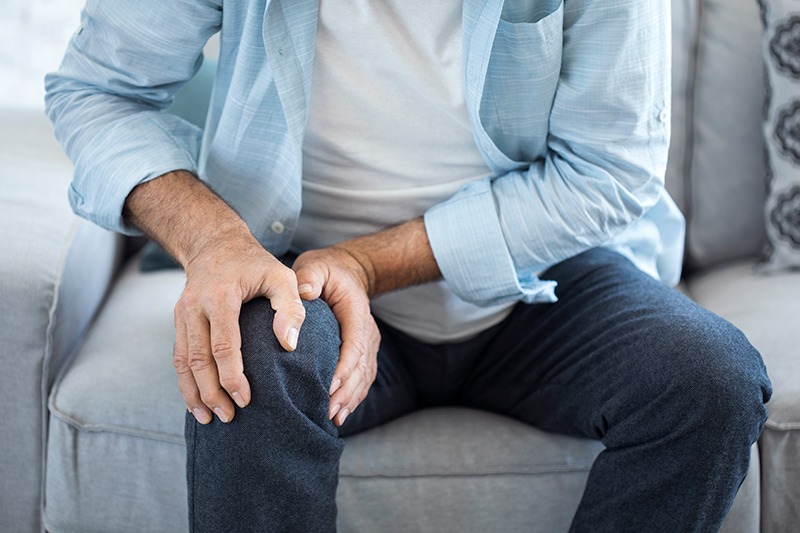
5 Surprising (Yet Common) Knee Pain Causes
You rely on your knee joints to keep you active and mobile. But as the largest and most complex joint in your body, your knees are vulnerable to a wide range of painful conditions. Learn about five common causes of knee pain here.
Knee pain is one of the most common complaints among patients who seek help from our expert team of board-certified orthopedists at Orthopedic Center of Palm Beach County in Atlantis, Boynton Beach, and Wellington, Florida.
It makes sense that knee pain — both the acute type that comes on suddenly and the chronic kind that emerges gradually — is the most frequent pain problem right behind lower back pain; after all, this complex hinge joint absorbs and supports most of your weight when you move.
Here, we discuss what makes your knee joint vulnerable to a variety of painful conditions, list five common causes of knee pain, and explain when you should seek expert evaluation and care.
Your knee: A complex hinge joint
Your knee is a hinge joint that joins your thigh bone (femur) and shin bones (tibia and fibula). Situated in the shallow cup of your tibia, the end of your femur is cushioned by a thick layer of cartilage. At the front of your knee joint, your kneecap (patella) sits in a groove at the bottom end of your femur.
The bones of your knee joints are reinforced and stabilized by tough bands of connective tissue called ligaments. Each joint is further cushioned by additional cartilage and enclosed within a tough capsule that’s filled with lubricating synovial fluid. Surrounding each joint are fluid-filled capsules (bursae) that offer extra cushioning.
As the largest and most complex joints in your body, your knees absorb and support most of your body weight when you move. That’s why it’s also one of the most injured joints — and sudden (acute) or progressive (chronic) damage to any of its structures can result in pain.
Five common causes of knee pain
Knee pain is a common problem for people of all ages and fitness levels. It can come on quickly after an intense workout or acute injury; it can also appear as mild joint discomfort that slowly worsens over time. Knee pain may come and go, improve or worsen with activity, or feel more intense first thing in the morning.
Five common causes of knee pain are:
1. Osteoarthritis (OA)
OA is a leading cause of knee pain in middle-aged and older adults. Also known as degenerative joint disease, OA causes the gradual deterioration of the shock-absorbing, motion-facilitating cushion of cartilage within your knee joint.
While OA itself is an expected source of knee pain, many younger adults are surprised to be diagnosed with the condition. Repeated joint injury and being overweight can make OA more likely at a younger age.
2. Patellar tendonitis
Tendonitis is inflammation of your tendon triggered by repetitive use. Patellar tendonitis, also known as jumper’s knee, affects the tendon that connects your kneecap to your shinbone. Left untreated, tendonitis-related knee pain tends to worsen over time.
This overuse injury occurs most often in athletes whose chosen activity involves jumping or places their knees under increased stress (i.e., runners, gymnasts, volleyball and basketball players).
3. Prepatellar bursitis
Bursae are closed, fluid-filled sacs that act as gliding surfaces between your skin, bones, tendons, ligaments, muscles, and other tissues. Bursitis develops when repeated damage or irritation (or in some cases, infection) makes these sacs painfully inflamed and swollen.
Prepatellar bursitis, also known as carpenter’s knee, occurs when the bursae that cushion the front of your kneecap become painfully inflamed by either the pressure of frequent kneeling or knee trauma (i.e., an accidental fall).
4. Ligament sprains
Acute sprains are a frequent cause of knee pain, swelling, instability, and reduced range of motion. A sprain happens when ligaments — or the tough, rope-like tissues that hold your muscles and bones together and keep your joint stable — are stretched beyond their limits.
A sprained knee ligament or strained connecting muscle is usually caused by a sudden twisting movement or a blow to your knee, such as what might happen in a fall. Knee sprains commonly involve your medial and lateral collateral ligaments (MCL and LCL).
5. Acute cartilage tear
Within your knee joint, between your thigh bone and shinbone, there are two C-shaped cushions of strong yet flexible shock-absorbing cartilage called menisci. These all-important cartilage pads act as stabilizers and help facilitate smooth joint motion.
A meniscus tear is a common injury that often occurs along with knee sprains. You may feel a popping sensation in your knee the moment it happens, followed by joint pain, stiffness, and instability.
Seeking expert care for knee pain
Knowing when to seek expert evaluation and care for your knee pain can be the difference between a quick recovery or a worsening problem. See our team if your knee pain doesn’t improve with RICE therapy (rest, ice, compression, and elevation), interferes with your normal routine, limits your mobility, or persists longer than a couple of weeks.
Give us a call today to schedule a visit at your nearest Orthopedic Center of Palm Beach County office, or click online to book an appointment at your convenience.





